It was decided in the summer of 1967 to merge the former companies and form a unified large transport company. This was a return to the structure that existed until 1949, because until then the Budapest Székesfővárosi Közlekedési Részvénytársaság (BSZKRT) [Budapest Metropolitan Transport Company Limited by Shares], owned by the capital, was responsible for Budapest's public transport. With the creation of BKV, a giant company employing 25,000 people was created, which still defines the capital's public transport. At one time, the company was even bigger, in 1984, for example, it was the fourth largest company in the country. According to the 12 September 1967 issue of the newspaper Esti Hírlap, the following was expected from the establishment of BKV:
"The unified traffic dispatching service may - for the first time in the history of Hungarian transport - also solve the problem of rush hour traffic; it constantly monitors the changing needs and can quickly and flexibly reassign the means of transport, send the cars to where many people are waiting, and then send the buses and trams further if they are suddenly needed elsewhere. Additional benefits are expected from the joint venture. They are unifying the maintenance of the tracks, servicing and overhauling the vehicles, and high-level mechanisation is planned for these works. And the joint investment activity will enable them to pay attention primarily to the service of the travelling public."
Take a look at what public transport in the capital was like when the unified company was founded, with what, how, and for how much Budapest's public could travel.
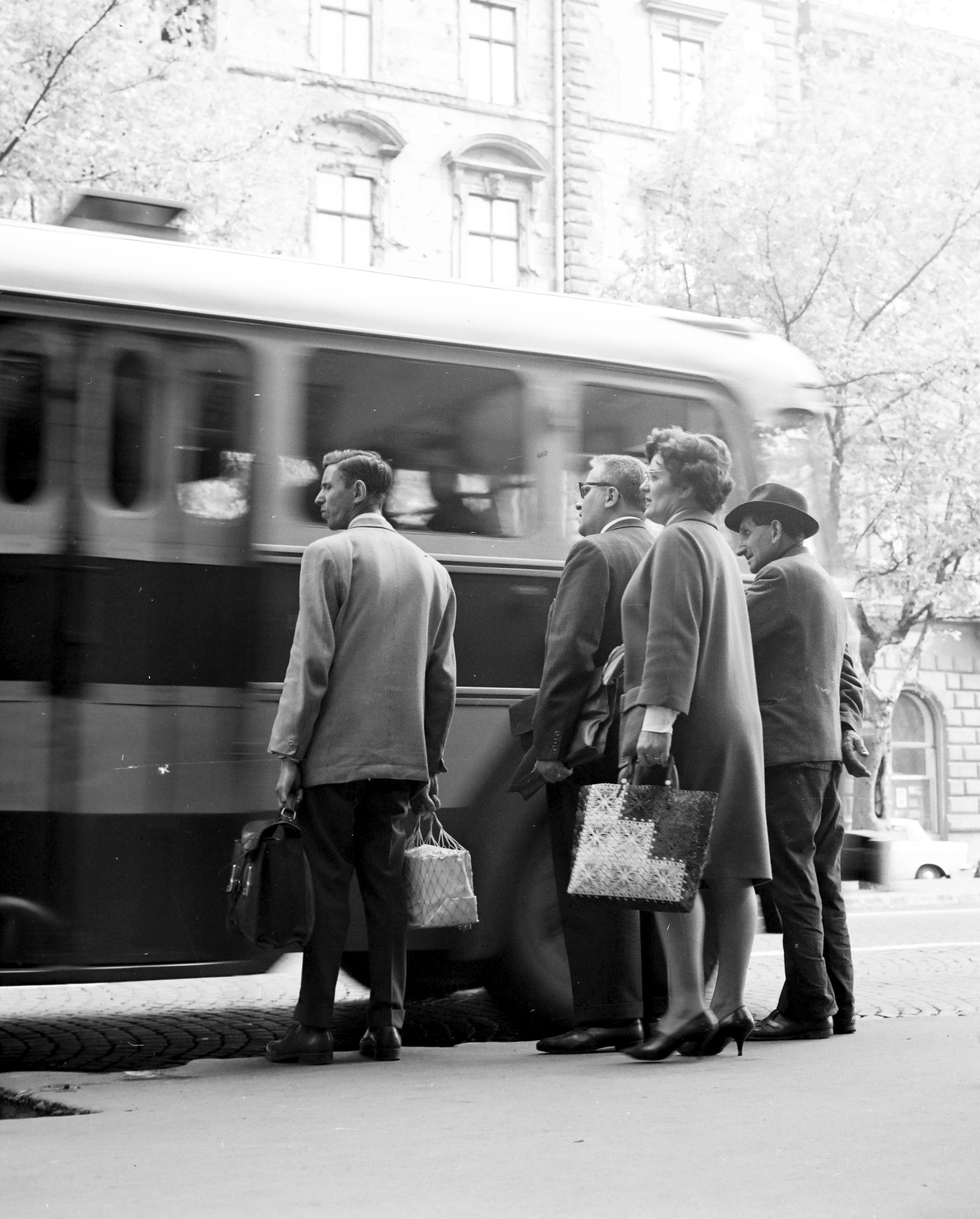
The bus has just left (Photo: Fortepan/No.: 266414)
First, let us see what was not in the repertoire. First of all, metro line 2 was not ready yet, although it was already being built (again), and additional lines were planned, but there was no underground public transport apart from the underground railway. There was no Funicular in Buda Castle, it was not restored after the war, its track was demolished, and the Chairlift also did not run.
The backbone of transportation was trams, trolleybuses and buses, as well as suburban railways towards the agglomeration, of which the one in Szentendre went only as far as Margit Bridge, while the one in Gödöllő went as far as the Keleti Railway Station. The trains of the suburban railway were still partially made up of old cars, but in the 1960s the GDR-produced MIX trains appeared (this is an interesting type marking because it is actually the letter M and a Roman number 9), of which a few are still in use today.
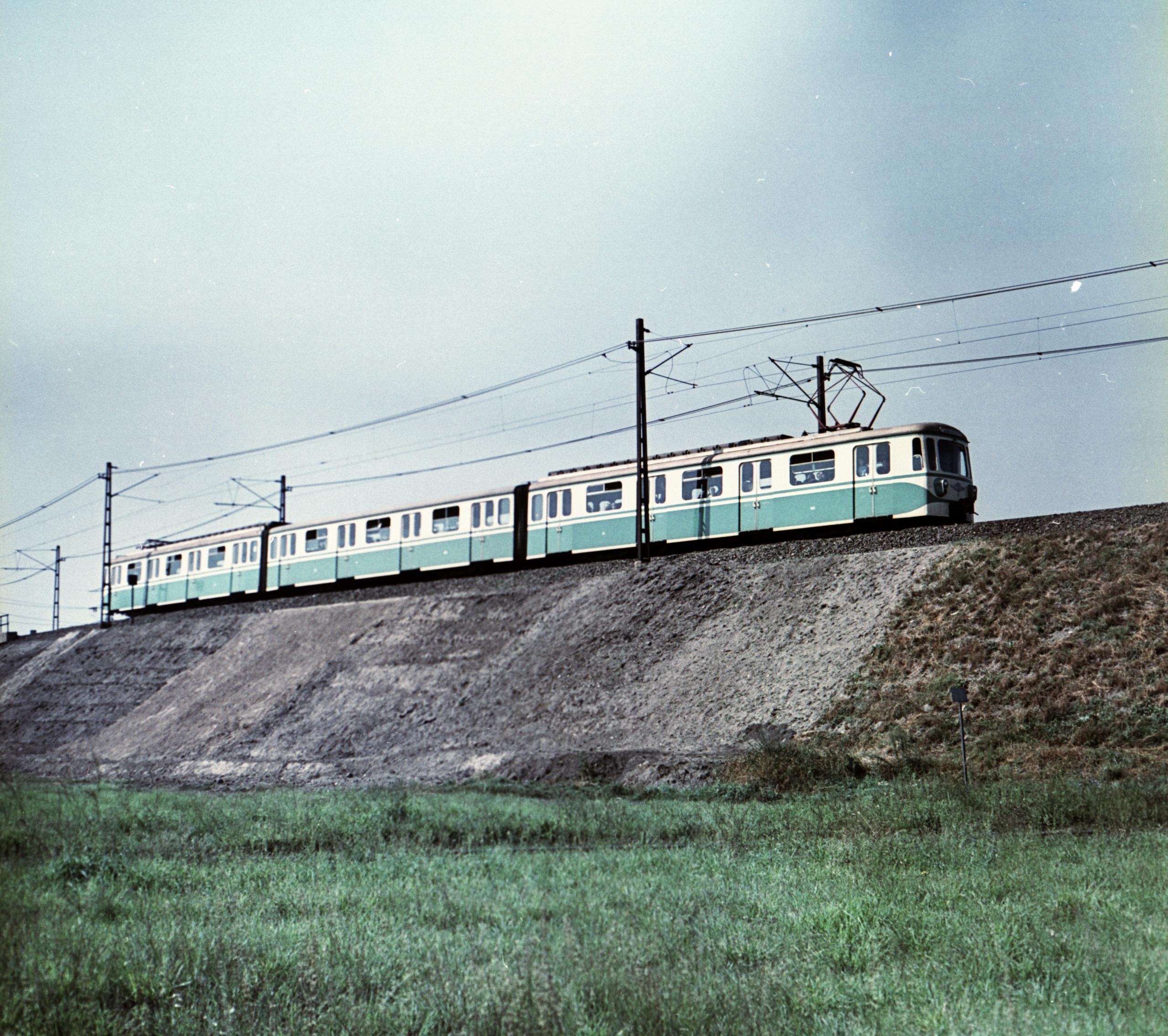 MIX-type train in 1966 (Photo: Fortepan/Főmterv)
MIX-type train in 1966 (Photo: Fortepan/Főmterv)
The tram transport also looked completely different, there was no tram 1 yet, instead, the 33 ran on a much shorter line, and trams also ran on the Erzsébet Bridge, and tram 58 also ran to Zugliget. In the field of trams, a significant development took place in the 1960s, since the appearance of UV trams in the second half of the 1950s was a novelty, but in the 1960s, first, the Bengali, produced in-house within the framework of the Metropolitan Electric Railway Municipal Company, i.e., home-made articulated trams appeared on the Budapest tracks, and the appearance of the more modern industrial articulated trams manufactured by Ganz, which are still running in Budapest today, was imminent.
The underground railway ended at the Zoo, it did not cross Hungária Boulevard, and even though in 1960, a trailer was attached to the cars that entered service in 1896, these vehicles were less and less able to withstand the load.
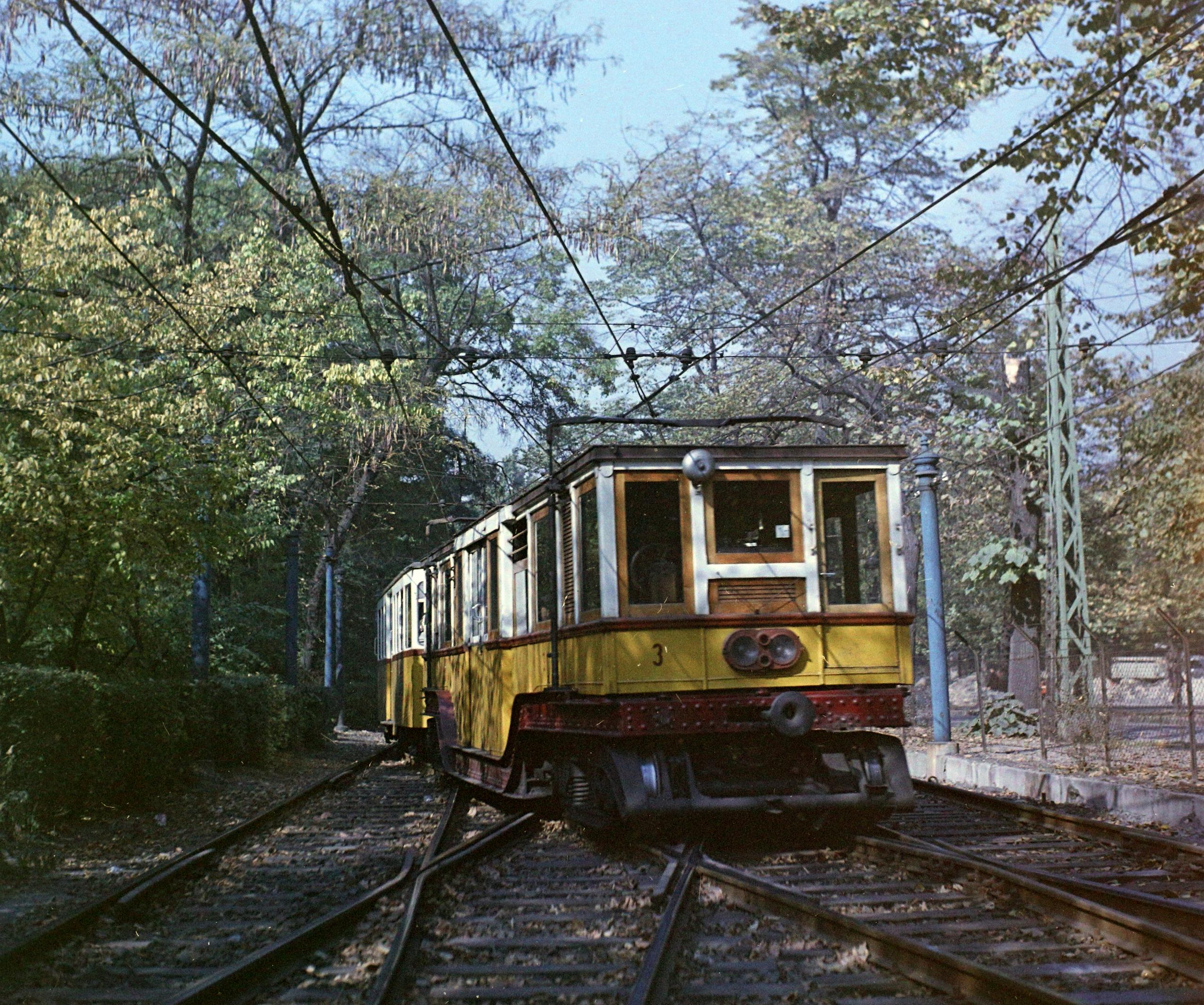
The now defunct section of the underground and its old train (Photo: Fortepan/Uvaterv)
In the trolley network, Soviet and Hungarian vehicles transported passengers, often pulling a trailer behind them, but this practice was abandoned at the same time as BKV was established. As it can be seen in the case of buses, home-made articulated vehicles made from discarded buses appeared here, as well as Soviet ZIU-5 cars from 1967.
In the case of buses, the 1960s were a decade of great transformation. The appearance of the uniform 200-type-family of BKV's "golden age" is still a long way off, although prototypes of the then modern, even world-class, spacious, comfortable buses were already made in the Ikarus Factory, but when BKV was founded, the fleet consisted of older solo buses and home-made, articulated buses assembled from scrapped old buses converted, assembled and scrapped in the home workshop of the Metropolitan Bus Municipal Company. Modernity was represented by the IK180 articulated buses manufactured in Ikarus from 1966, as well as the then most modern Ikarus 556 buses, which were introduced a year later.
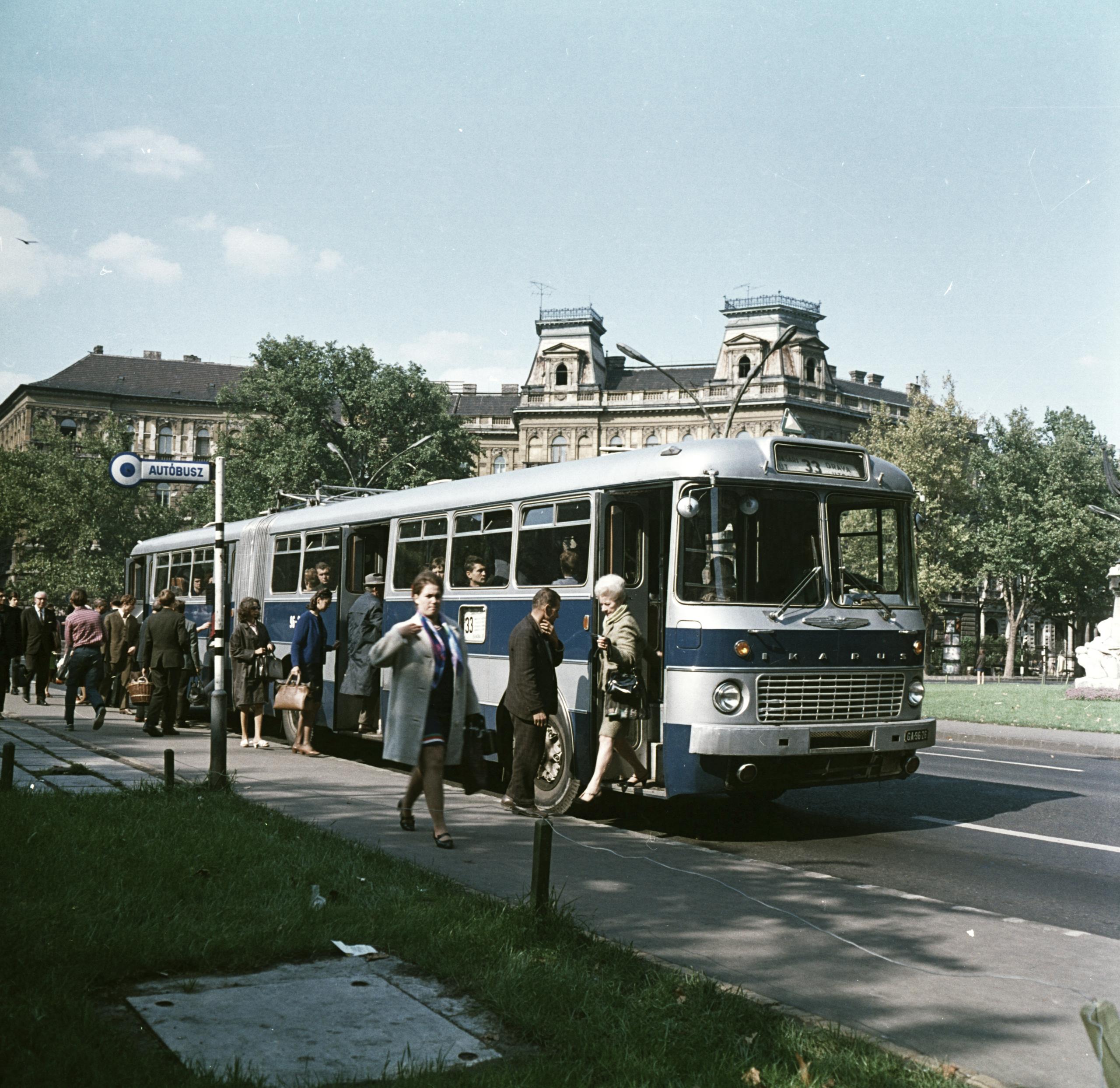
Ikarus 180 articulated bus in 1969 (Photo: Fortepan/Főmterv)
Of course, there was also the cogwheel railway, which was still being considered for liquidation in the 1950s, and therefore, when the BKV was founded, there were also pre-war trains on it, and modernisation became the task of the following decade, the 1970s.
However, BKV has inherited a unified system in the field of tariffs. In the 1960s, a large-scale simplification was implemented in the previous, almost opaque jungle of tickets and passes. Previously, a total of 173 types of tickets and passes were in circulation, meaning passengers and ticket inspectors had to deal with an incredible number of combinations. By the way, the ticket inspector then meant something different than it does today, they did not show up occasionally, but they were permanent staff of the vehicle because on every tram, trolleybus and bus there was (or used to be) a ticket inspector who checked the tickets. This system was still in operation when the BKV was founded, and it was abolished only in 1969.
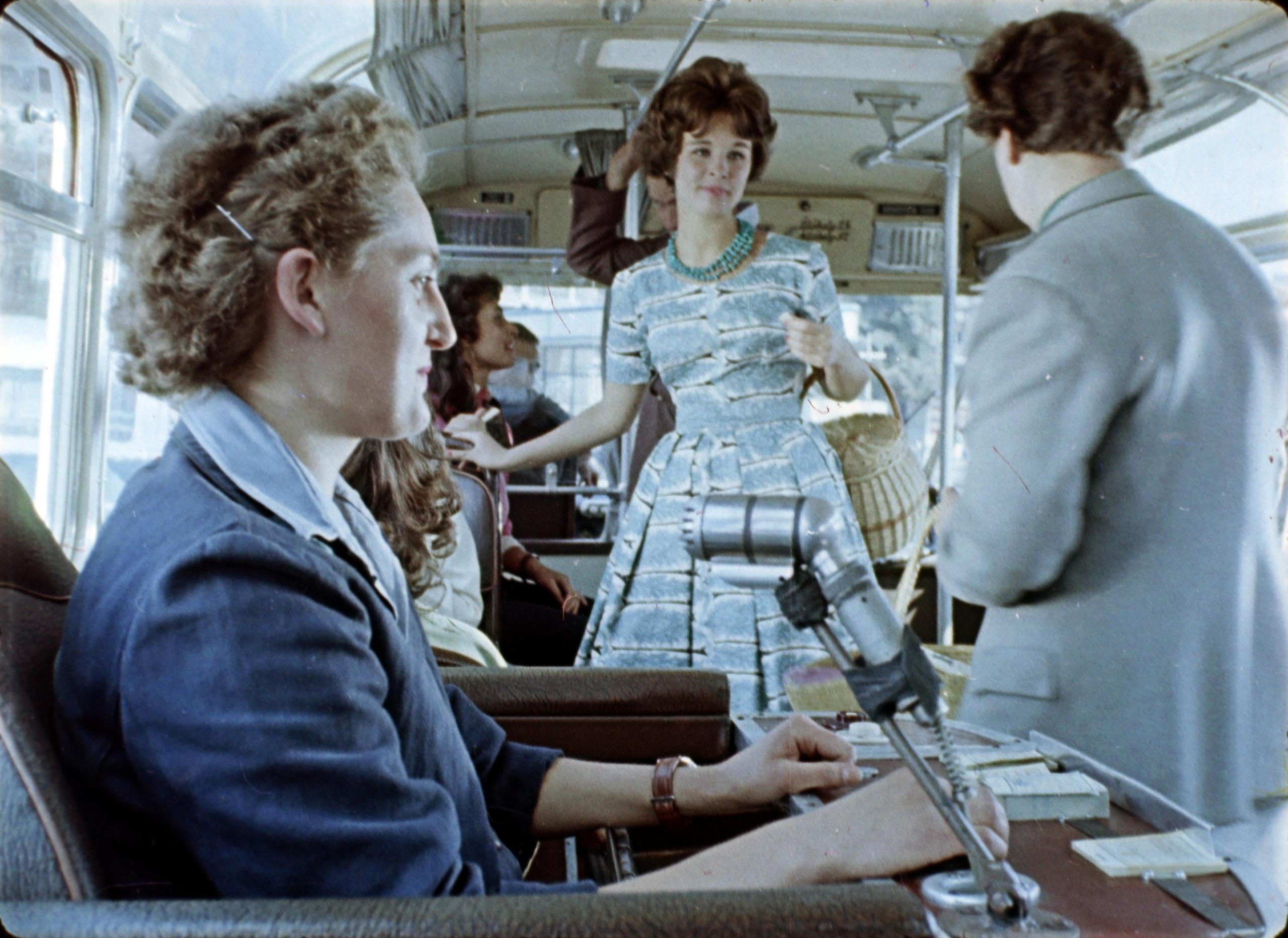
Seated ticket inspector in 1959, frame from the film My Town (Photo: Fortepan/No.: 174841)
In the area of tariffs, the major reform took place in 1966, season tickets were introduced and the entire system was simplified. A line ticket for the tram, trolleybus, and underground cost 1 HUF, and for the bus and cogwheel railway it cost 1,50 HUF. They had to pay 45 HUF for a monthly tram pass, and 110 HUF for a bus pass (which was also valid for the tram), but it was possible to buy a pass for only one bus line for 50 HUF, or only for the cogwheel railway for 30 HUF. The discount pass for students and pensioners cost 20 HUF for the tram only, and 52 HUF for the combined pass valid for everything. At the time of introduction, in 1966, the average salary was 1,856 HUF. (Calculated differently, a bus ticket would cost 142 HUF at today's prices.)
The BKV has really created a unified transport system, the parallels have decreased and it has become a dominant company in Budapest.
Cover photo: Tram, trolley and bus on Baross Square in 1968 (Photo: Fortepan/Magyar Rendőr)
RELATED ARTICLES:
Beszkárt, the capital's public transport company, was founded 100 years ago

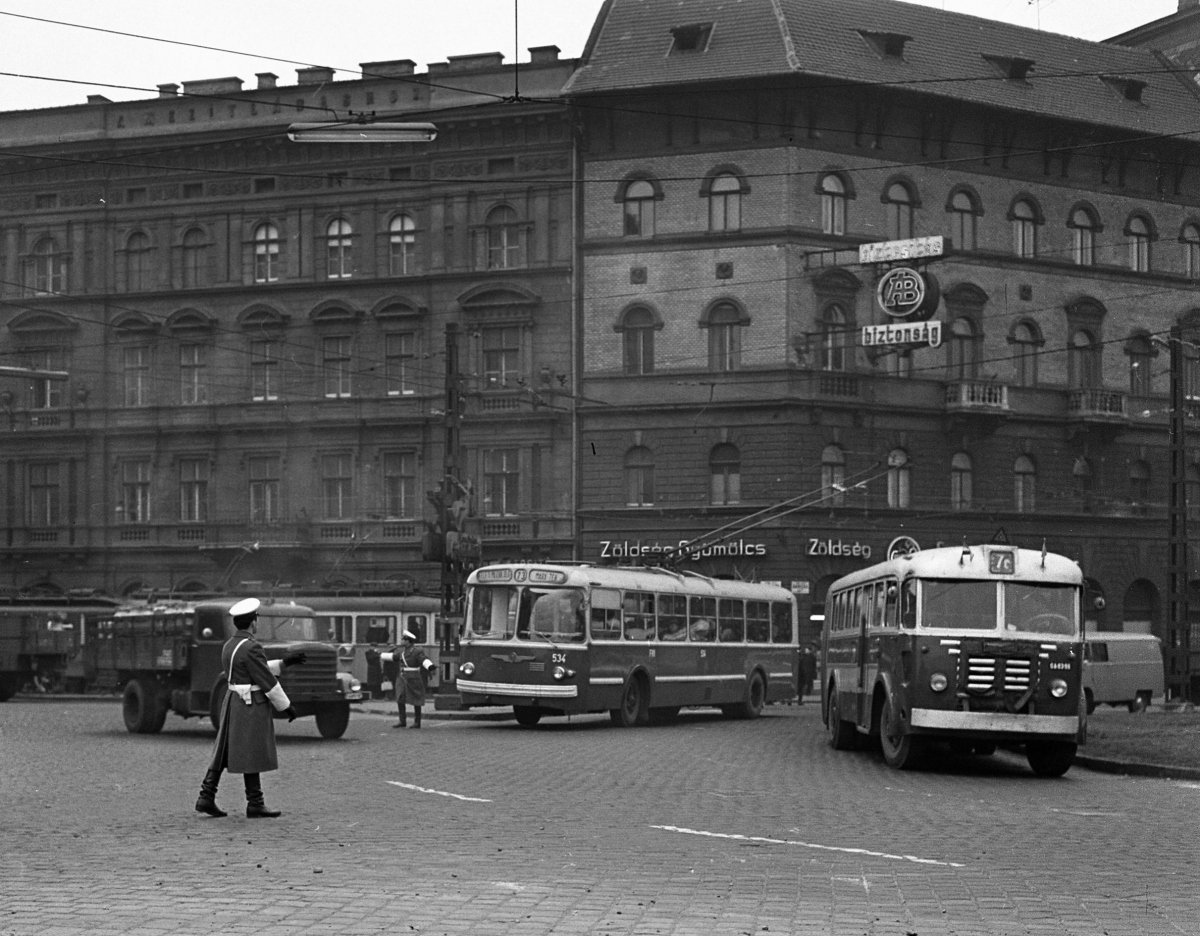


































Hozzászólások
Log in or register to comment!
Login Registration